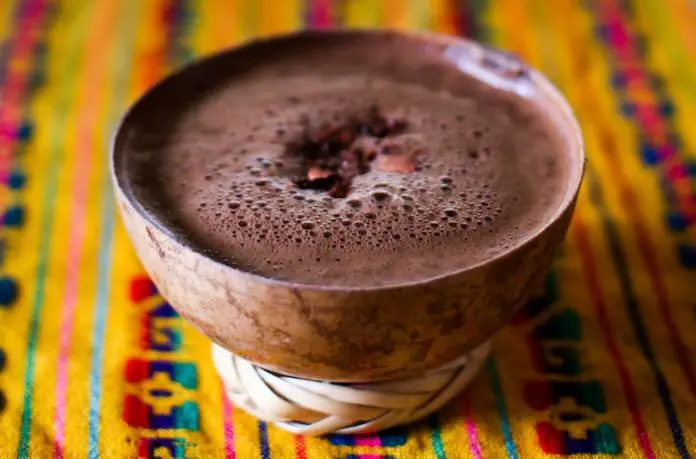What’s the first thing that comes to mind when you think of chocolate? If you ask non-Mexicans, they will probably imagine the staple milk bar we all know and love. But if you ask a Mexican like me, thoughts may turn to a comforting cup of hot chocolate or a traditional Mexican-style chocolate bar. But did you know that chocolate itself is Mexican?
Mexico has its own love story with chocolate — even the word itself comes from the Nahuatl “xocolatl” or “chicolatl.” The story dates back to before the arrival of the Spanish, when ancient cultures revered chocolate as a gift from the gods. With Spanish colonization and the blending of Old and New World traditions, the culture of chocolate expanded to transform into the sweet confection we know today.

But how did it all start? How did ancient cultures in Mexico use chocolate and how did it evolve to become the world’s most popular sweet treat? From a sacred beverage to an aphrodisiac to a worldwide empire, here are seven surprising facts about the history of chocolate that I’m sure you didn’t know.
1. The Olmecs were the first to turn cacao into chocolate
The history of chocolate begins in present day Ecuador, where new research suggests that cacao was first domesticated there around 3,600 years ago. However, researchers also believe it was the Olmec civilization, which flourished in today’s Mexican states of Tabasco and Veracruz from 2500 BC to AD 200, that fully domesticated cacao and discovered how to transform it into chocolate.
There is no written record of exactly how the Olmecs consumed chocolate. However, experts believe they consumed it at home and during religious ceremonies.
2. The Maya expanded the use of chocolate
Centuries after the Olmecs vanished, the Maya civilization built upon their knowledge of chocolate. They improved processing techniques, consuming chocolate as a beverage and using it in sacred rituals. Maya people also discovered the technique of fermenting cocoa beans to several types of chocolate beverages.
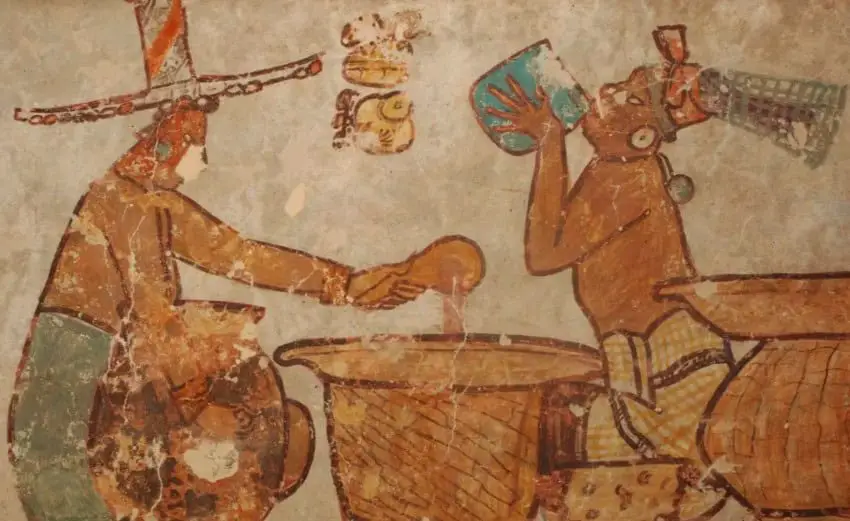
Spanish bishop Diego de Landa, one of the most notable chroniclers of Yucatán during the early years of Spanish colonization, said the Maya used chocolate as an anointment on children during what he perceived as baptisms and as a toasted beverage in engagement and marriage ceremonies — think today’s champagne. Moreover, they cultivated sacred groves of cacao trees and assigned divine properties to chocolate, extensively writing about it in their codices and in the Popol Vuh, the sacred narrative of the Kʼicheʼ Maya people.
3. The perfect cup of chocolate had chili, no sugar and a lot of foam
To prepare a good cup of chocolate, women would ground the cocoa beans three times in a metate, or traditional stone hand mill, to ensure they were finely crushed. They would then add washed corn kernels and water, mixing the blend until it had slightly thickened.
The Mexica and Maya added different spices like vanilla and annatto, flowers, seeds and different varieties of chilies. The Maya also added honey.
An essential part of a cup of chocolate was the foam. According to Spanish friar and colonial chronicler Juan de Torquemada, to ensure “a good cacao with a lot of foam,” codices show women pouring the beverage from a high distance to make it frothy.
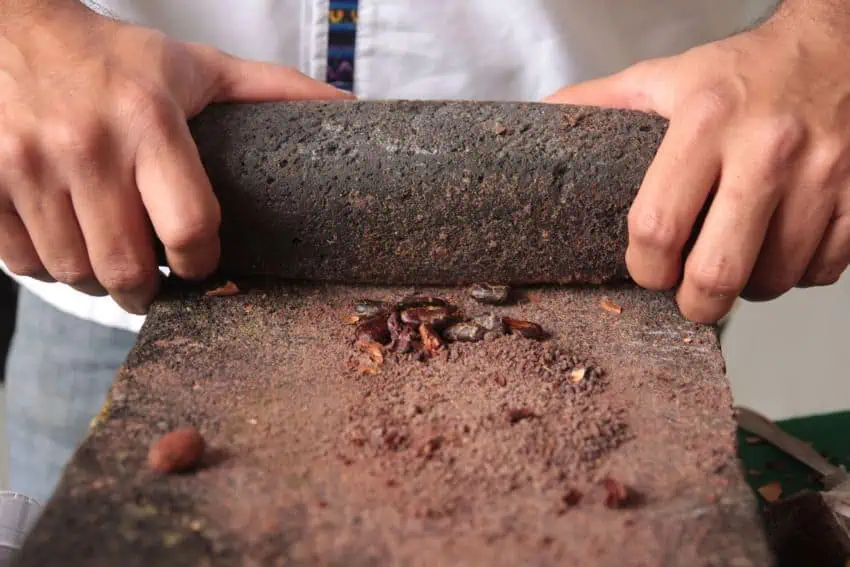
Depending on the season, ancient cultures would drink cocoa as a hot or cold beverage. Recipes varied depending on the time of day and the occasion.
4. The Mexica thought chocolate was a divine gift and an aphrodisiac
Like the Maya, the Mexica (better known as the Aztecs) and other Central Mexican cultures prized chocolate, which had both spiritual and practical significance for them.
In the Mexica capital of Tenochtitlán — today’s Mexico City — only royalty, warriors and traders had access to the glorious beverage. Spanish conquistador Bernal Díaz del Castillo reported that Emperor Moctezuma’s guards drank 2,000 cups of chocolate “with foam” daily.
The Mexica also thought of chocolate as an aphrodisiac. Moctezuma is said to have drunk several cups of chocolate before visiting his many wives.
5. The Mexica used cacao beans as currency
The Mexica gave cocoa an added value as currency. Some records say that the royal coffers of Tenochtitlán held spectacular quantities of cocoa, resembling the modern vaults in today’s banks.
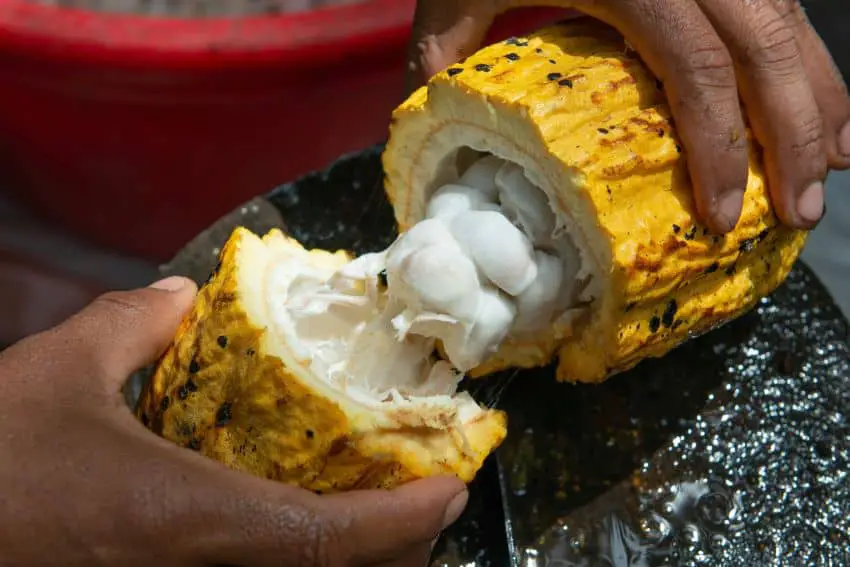
Since the Mexica used cacao to measure wealth, it was said that Tlaxcala was a poor region because they didn’t have “cacao to drink.” Many vassals paid tribute to Tenochtitlán in the form of cacao beans.
Historians believe the Mexica used different varieties of cacao beans for currency and for preparing beverages.
The beans continued to be used as currency decades after the Conquest: a 1545 record of market prices from Tlaxcala shows that a turkey hen went for 100 full cacao beans or 120 shrunken ones, a ripe avocado could be had for one full bean and a small rabbit would run you 30 beans.
6. Europe gave sweet chocolate to the world
After learning about the energizing properties of chocolate, Spanish conquistador Hernán Cortés introduced the beverage to his soldiers to sustain them during campaigns when they had access to no other foods. “Just one cup of this drink strengthens the soldier such that he can walk all day without needing any other food,” the conquistador wrote.
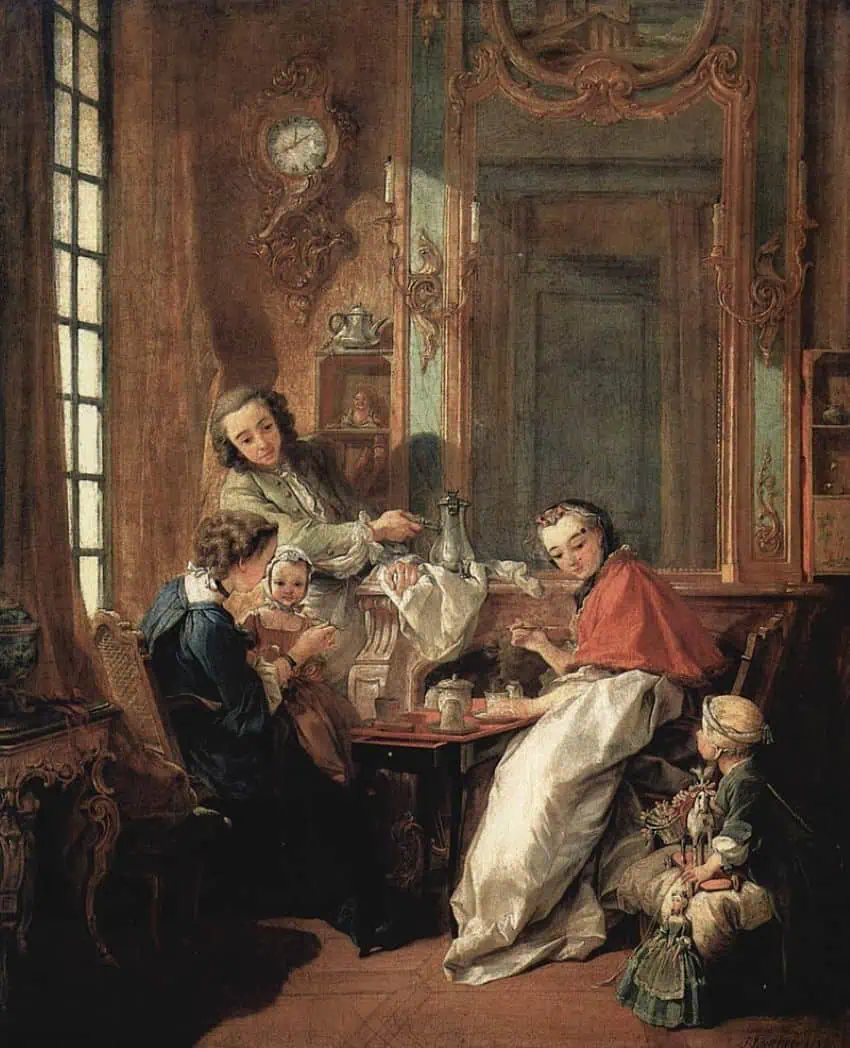
Later, the fusion of cultures turned the cup of chocolate into a sweet and hot beverage by adding ingredients like cinnamon and eggs and replacing chilis with sugar. Besides cacao, vanilla is the only original ingredient that remains in most commercially produced chocolate.
In Spain, the beverage became a household staple and traveled to other parts of Europe until it reached the Swiss, the inventors of the modern-day chocolate milk bar we know today.
Next time you think of chocolate, don’t forget to thank Mexico for the role it played in making this treat what we know today.
Gabriela Solis is a Mexican lawyer turned full-time writer. She was born and raised in Guadalajara and covers business, culture, lifestyle and travel for Mexico News Daily. You can follow her lifestyle blog Dunas y Palmeras.
